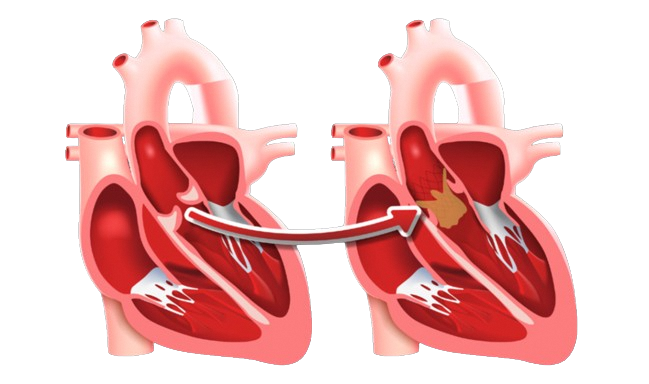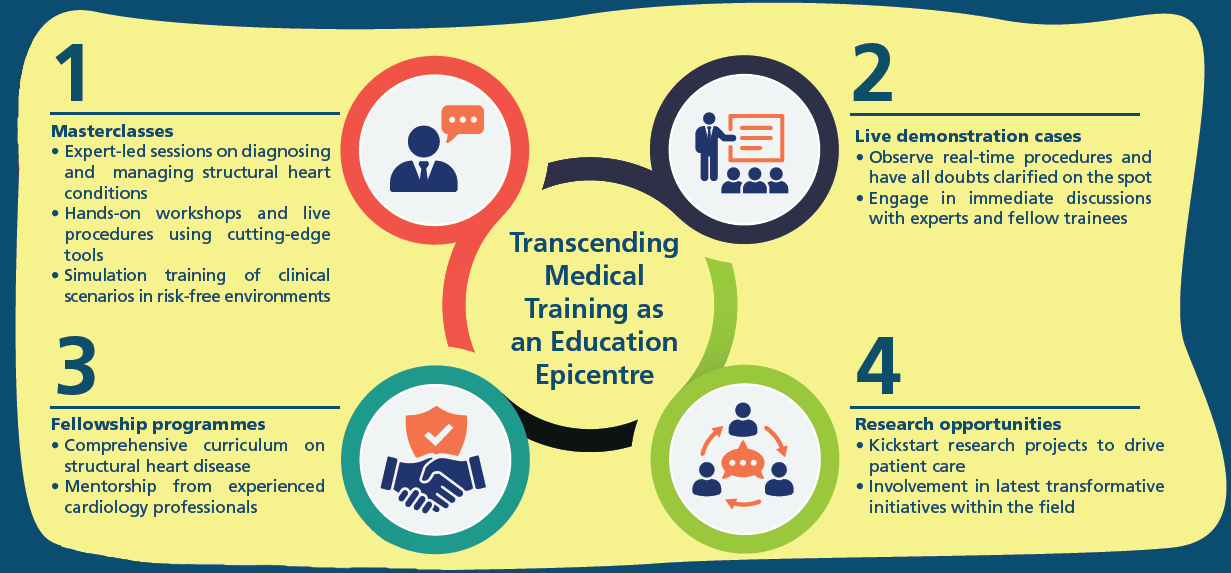Advancing Regional Healthcare
The rise of NUHCS structural heart training centre
PULSE Issue 43 | July 2024
The National University Heart Centre, Singapore (NUHCS), has undergone a remarkable evolution – transforming from a clinical care centre into a regional hub of excellence that trains and educates healthcare professionals from around the world in structural heart interventions. In recent years, cardiovascular care has witnessed a profound shift towards Transcatheter Aortic Valve Implantation (TAVI) as the preferred treatment for aortic valve disease1.
Transcatheter Aortic Valve Implantation (TAVI)

A minimally-invasive surgical procedure where a new valve is inserted into a blood vessel and guided to the heart, through a catheter, to replace the damaged valve and regulate blood flow.
Regional training centres play a pivotal role in this transformation, serving as epicentres of knowledge dissemination and skill enhancement. Recognising the importance of TAVI training centres in meeting the growing demand for this crucial treatment procedure, NUHCS has established itself as a regional TAVI training hub in Asia.
As a regional leader in TAVI excellence, NUHCS is dedicated to advancing the development of TAVI programmes and in nurturing the next generation of structural practitioners in Southeast Asia. NUHCS has hosted fundamental TAVI training courses for new centres in the region embarking on TAVI programmes. These comprehensive courses cover everything from programme development insights to live case observations, equipping new teams with the knowledge and experience to establish their own successful TAVI programmes.
Beyond didactic training, participants are also given the opportunity to join the NUHCS structural team in the catheterisation lab to witness procedures first-hand. By sharing their journey in building a leading TAVI programme, NUHCS empowers other centres to achieve excellence in serving the needs of structural heart patients in their communities. The journey towards excellence does not stop at TAVI. With Patent Foramen Ovale (PFO) revealed to be a critical contributor to strokes on a global scale, especially in seemingly healthy and young individuals, it has catalysed a paradigm shift in stroke prevention strategies around the world.
NUHCS stands at the forefront of the region to advance the field of PFO management, spotlighting the importance of prompt intervention in PFO closure through educating and training doctors for improved heart health and stroke rates in patients.
Patent Foramen Ovale (PFO)
An opening between the upper chambers of the heart, which failed to close naturally after birth, requiring a minimally-invasive procedure where a small device will be implanted via the catheter through a large vein in the groin, to close the hole.

In response to the crucial need for training in the management of PFO closure and the use of latest medical devices, NUHCS spearheaded the first-ever PFO Masterclass – “The Heart-Brain Approach” from 18 to 19 April – bringing together fellow medical professionals from around the world to NUHCS to learn clinical skills and surgical techniques in structural interventions from our Cardiology experts. Co-led by Dr Ivandito Kuntjoro, Director of Structural Heart Programme and Senior Consultant, Dept. of Cardiology, NUHCS, this session fostered collaboration between cardiologists from NUHCS and neurologists at the National University Hospital (NUH), encouraging multidisciplinary education on the diagnosis and treatment of PFO-related stroke cases.
Regional doctors who participated had the opportunity to observe live PFO closure procedures, gaining understanding on the anatomy, imaging techniques, and procedures essential for successful hole closure, integrating the use of intracardiac echocardiography2 with hands-on learning about stroke prevention treatment options.
In the ongoing pursuit of advancing structural intervention techniques, NUHCS is also proud to announce the initiation of its Structural Heart Diseases Fellowship programme, aiming to foster comprehensive training incorporating the latest findings and advancements to equip participants with skills necessary to adeptly navigate the diagnosis, management, and intervention of structural cases – ranging from straightforward to the most complex ones.

As NUHCS continues to be the collaborative educational hub for sharing insights with regional and international medical professionals, its impact and influence shape the future of cardiovascular care globally, ensuring the highest standards of patient care is maintained worldwide.
1. Aortic valve disease – A condition where the aortic valve of the heart becomes narrowed, restricting blood flow from the heart to the rest of the body.
2. Intracardiac echocardiography – An ultrasound imaging involving a catheter insertion into the heart, for a detailed view of the heart’s interior to diagnose heart conditions.
